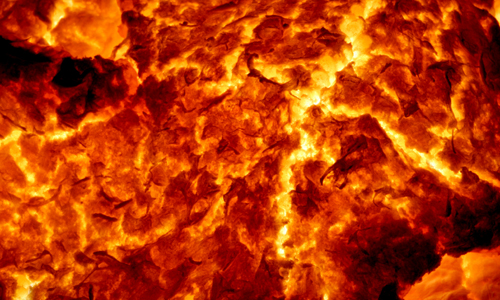Ohio University Geological Sciences graduate student Sarah Starkey presented a poster on “Determining the Extent of Hothouse Climate Effects on the Jurassic Silica Cycle” in October at the annual meeting of the Geological Society of America in Vancouver, British Columbia.
Her co-author was Dr. David Kidder, Associate Professor of Geological Sciences at Ohio University.
Abstract: Phanerozoic hothouse climates appear to affect the marine silica cycle in different ways, depending on hothouse intensity. These HEATT (Haline Euxinic Acidic Thermal Transgression) episodes usually persist for less than 1 million years. Large Igneous Provinces (LIPs) are thought to have triggered at least two Jurassic HEATT episodes. The Central Magmatic Atlantic Province (CAMP) has been linked to the Triassic-Jurassic HEATT episode, as has the Karoo-Ferrar LIP to Pliensbachian-Toarcian warming. Hothouse-related alterations to the Jurassic silica cycle may include changes in dissolved silica input to the oceans as well as changes in ocean circulation and chemistry. Although the Early Triassic hothouse interval is marked by a chert gap in the sedimentary record, Jurassic HEATT episodes analyzed to date did not terminate biosiliceous deposition, but conspicuous changes appear evident.Ritterbush et al. (2011; 2013) suggested that silicate weathering of the CAMP basalts stimulated a pulse of spiculitic chert beds on earliest Jurassic shelves at least partly via increasing available dissolved ocean silica. The Karoo-Ferrar LIP may have similarly perturbed the Jurassic silica cycle in the Pliensbachian-Toarcian. Radiolarian diversity dropped sharply at this horizon, but a low-diversity assemblage of apparently opportunistic spongy radiolarians thrived in the wake of this possibly HEATT-driven diversity crash.
Conspicuous spiculite beds mark some European sections in the Late Pliensbachian, just as radiolarian diversity was plummeting. Sponge abundance may have been favored by increases in dissolved silica made available by reduced radiolarian demand and/or silicate weathering of Karoo-Ferrar LIP rocks. Data available to date favors the former, as the eruptions appear to post-date the spiculites. Siliceous-sponge reefs appeared briefly, just after the Pliensbachian-Toarcian HEATT conditions abated, possibly reflecting weathering of the Karoo-Ferrar LIP. Similar siliceous sponge reefs are common in the Upper Jurassic, but are rare in older Jurassic strata. Their brief Middle to Upper Toarcian appearance may hint at a HEATT-stimulated preview of a facies that became common in the Upper Jurassic when sea level was higher and warm climate was perhaps more stable than in the Early Jurassic.


















Comments